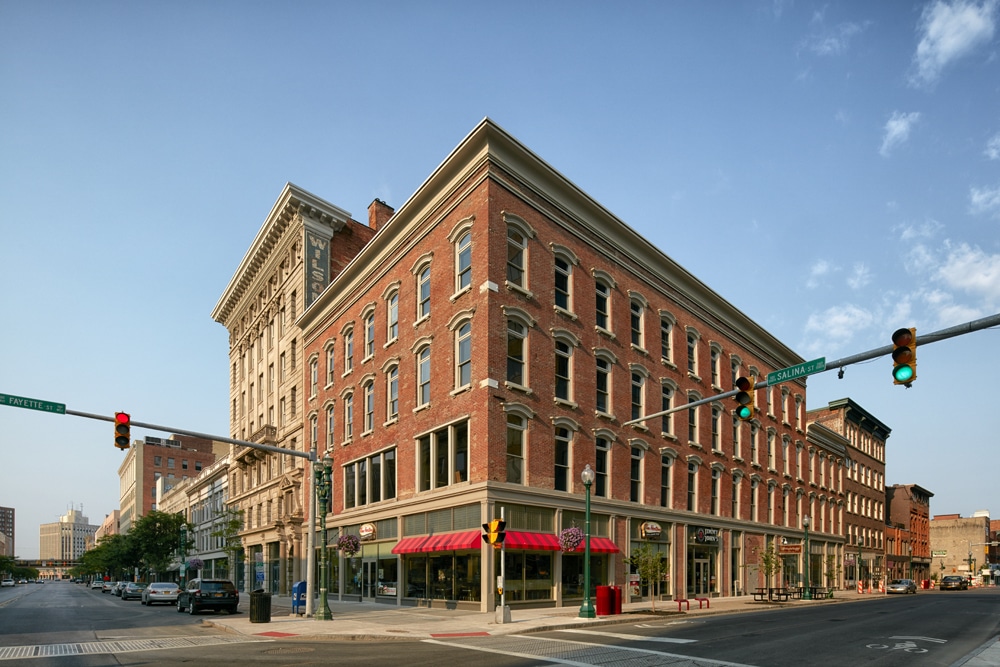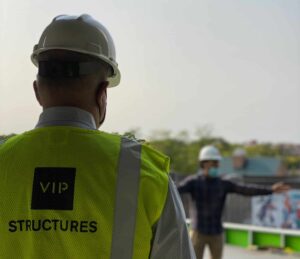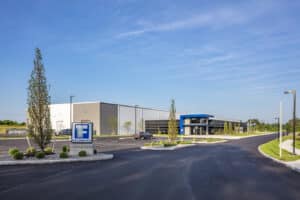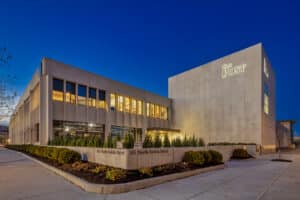U.S. cities are growing fast – and a consolidating population has driven changes in the field of architecture. In cities like Syracuse, urbanization is changing the face of the community, encouraging people to shop and work much closer to where they live. There is a general trend towards cities encouraging combined commercial and residential spaces, which are expensive to build. It’s easy to see how these factors can have an incredible ripple effect.
To fill the need, contractors and architectural firms have bought into techniques such as collaboration, integration, and intensive digital modeling. These allow large, complex buildings to be built faster and less expensively, but stronger and more sustainably than before. Let’s examine how and why some new architectural trends are changing the shape of the cities across New York State.
Collaboration
The move towards the design-build integration in architecture has been encouraged by both research and investment. In a study going back to 1999, the design-build philosophy is 33% faster and 6% cheaper than more traditional methods. Over the past two decades integrated firms have advanced their processes further, improving scheduling and cost. Ongoing adoption of the design-build and integrated philosophy is encouraged because of the benefits it can provide a client.
The trend towards integration of disciplines has spilled into both the public and private sector. At VIP Structures, we’ve wholly embraced, and even furthered, the design-build trend with architecture, engineering, construction and development all under one roof.

Merging of Commercial and Residential Space
For communities that emphasize walkability over drivability, people need to essentially live where they work and shop. This impulse, plus the continuing drive of urbanization, has led to the development of massive mixed-use commercial and residential developments across America. These developments are a benefit for fast-growing cities that need to make room on their outskirts.
The Pike Block complex in Syracuse, a VIP Structures project, is a great example of successful mixed-use development. This 150,000 square-foot compound was built in an underutilized section of the downtown Syracuse area. It now supports 68 rental units, as well as 35,000 square feet of retail space, all supported by an environmentally friendly geothermal heating and cooling system. The retail space includes both the offices of CenterState CEO and a branch of Pathfinder Bank.
Metro regions all over the country are using similar developments to revive underused real estate and attract wealthy tenants.
Building Information Modeling
We’ve already written a great deal about the proven benefits of Building Information Modeling (BIM), especially as a component of integrated design-build. Using powerful 3D CAD programs, BIM makes it easier for the design-build collaboration to understand how the various pieces of a building will fit together. This allows designers to identify and eliminate conflicts between a building’s various systems, improving construction accuracy, efficiency, and safety.
Joint Financing to Fund Building Projects
Joint ventures (JVs) between contractors can take several forms. They can be formed by contract or limited liability entities; they can have dedicated staff or pool resources; but no matter what form they take, their adoption is increasing. That’s because JVs confer many advantages for every party involved. For one thing, there’s less financial exposure – which also equals less risk. As giant mixed-use commercial and residential projects continue to gain popularity, JVs have experienced a similar boost.
When it comes to architecture trends, it’s all connected. Success in architecture means having a grasp on all four of the trends listed above. One could easily imagine a mixed-use development being constructed by a JV using BIM techniques, for example. For this kind of project to excel, one would need an architecture firm with its finger on that pulse, one that could offer the best of architectural design, engineering, construction, and development.



